What is the sinus tarsi?
The foot is comprised of 26 bones (creating 33 joints) all of which work synergistically to create a strong, stable and flexible platform, allowing effortless interaction between the body and the world around us.
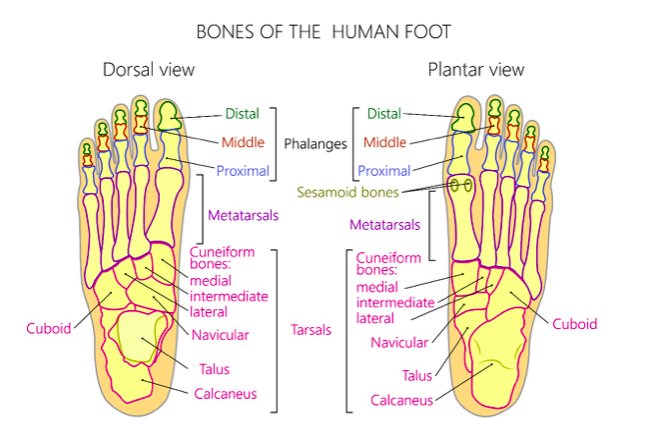
The sinus tarsi is an anatomical tunnel (see image below), basically a space or hole, created by two bones; the talus and calcaneus bones (which together also create the subtalar joint). It is located on the outside of the foot, just in front of your large bony bump (called the lateral malleolus) and the tunnel continues deep into the foot.
The sinus tarsi provides stability to the joints of the rear foot during inversion and eversion movements. It is filled with adipose (fat) and connective tissue and is rich in nerve endings and proprioceptive cells (cells used to provide sense of awareness of body position, increasing balance and stability) (Helgeston et al., 2009).
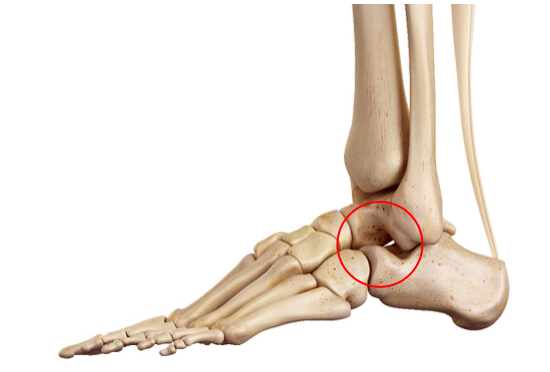
What is sinus tarsi syndrome?
Sinus tarsi syndrome is characterised by pain over the entrance of the tunnel at the anterolateral aspect (outside) of the ankle. It is capable of causing considerable pain and ankle instability (weakness) due to the significant number of nerve endings located within the space.

The sinus tarsi is surrounded by a thin membrane, used to reduce friction, generated during ankle and foot movements. This membrane is called the synovial membrane and is filled with a lubricating fluid called synovial fluid. Sinus tarsi syndrome occurs when the synovial membrane becomes inflamed and swollen, resulting in synovitis. The pain is often aggravated by prolonged walking and standing and running.
The true cause of sinus tarsi syndrome is not fully understood. However, there are multiple risk factors associated with the onset of this condition.
These risk factors include:
- A significant single traumatic event/injury – research has shown high incident rates (43%) of ankle ligament tears associated with the onset of sinus tarsi syndrome (Lee et al, 2008).
- Multiple/repetitive ankle sprains – ligaments have poor blood supply and when repetitively injured can become thickened and compromised. A chronically thickened ligament can cause impingement (pinching) within the sinus tarsi (Lee et al, 2008)
- Pronated foot arch (flat feet) – due to excessive compression at the sinus tarsi (image below)
- Hypermobility syndrome – general joint laxity can predispose you to sinus tarsi syndrome
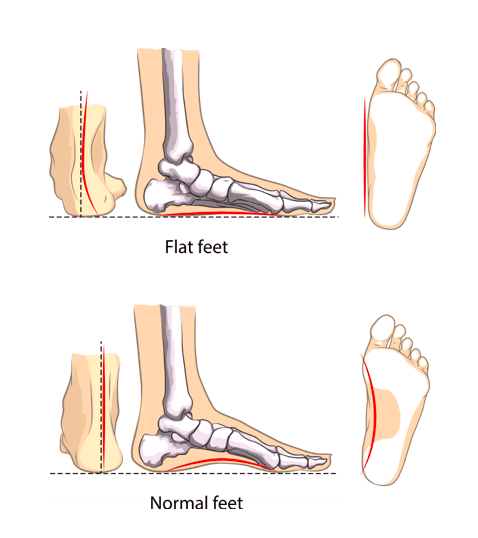
How do you know if you have sinus tarsi syndrome?
Sinus tarsi syndrome symptoms typically present gradually over a period of time and are often associated with an old ankle injury which never completely settled.
Common symptoms of sinus tarsi syndrome include:
- Deep burning or shooting pain located on the outer aspect of the foot
- Tenderness to touch the area on the outside of the ankle just in front of the ankle bone
- Pain that increases with activities including walking, prolonged standing and running.
How do we diagnose sinus tarsi syndrome?
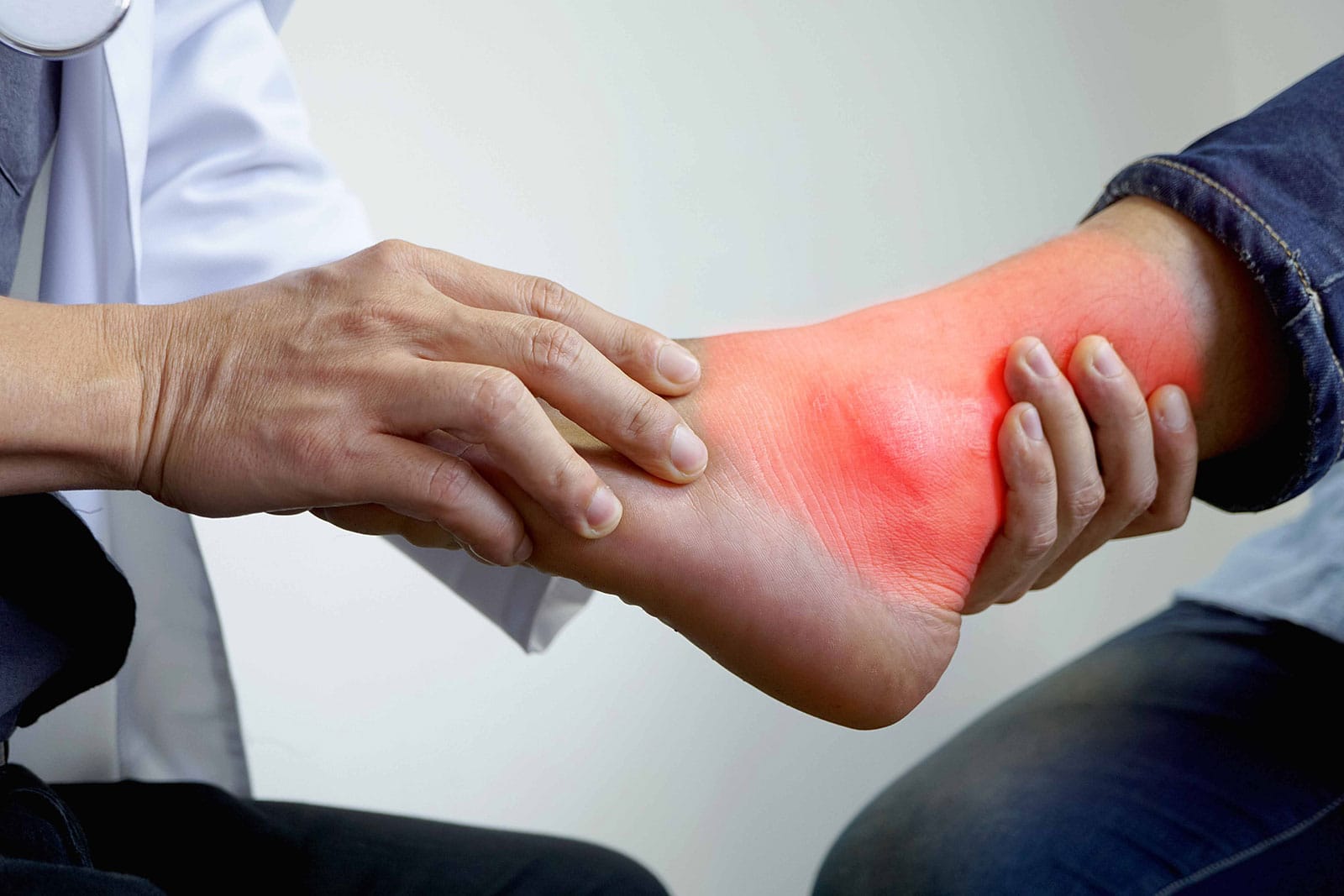
A diagnosis of sinus tarsi syndrome requires an in-depth clinical assessment. An accurate and timely diagnosis is essential for selecting the most effective treatment for you.
Clinical assessment for sinus tarsi syndrome can be undertaken by a doctor, podiatrist or physiotherapist and includes:
Clinical interview
A clinical interview is completed to understand how and why you developed your pain. Your clinician will ask you what activities increase or decrease your symptoms. A full medical history will also be taken to reveal any other relevant medical conditions.
Physical assessment includes:
- Structural assessment of your ankle/foot (including assessing the arch of your foot)
- Foot and ankle joint range of motion – assessing inversion and eversion of the ankle and sub-talar joint is of particular importance when assessing sinus tarsi syndrome
- Calf and intrinsic foot muscle strength testing
- Palpation (feeling) the joints of the foot
- Functional testing including walking, single leg balancing, hopping and running may be assessed
A clinical assessment can determine a diagnosis of sinus tarsi. However, further imaging may be required to confirm the diagnosis and rule out other causes of ankle pain on the outside of the ankle.
Diagnostic imaging
Magnetic resonance imaging (MRI)
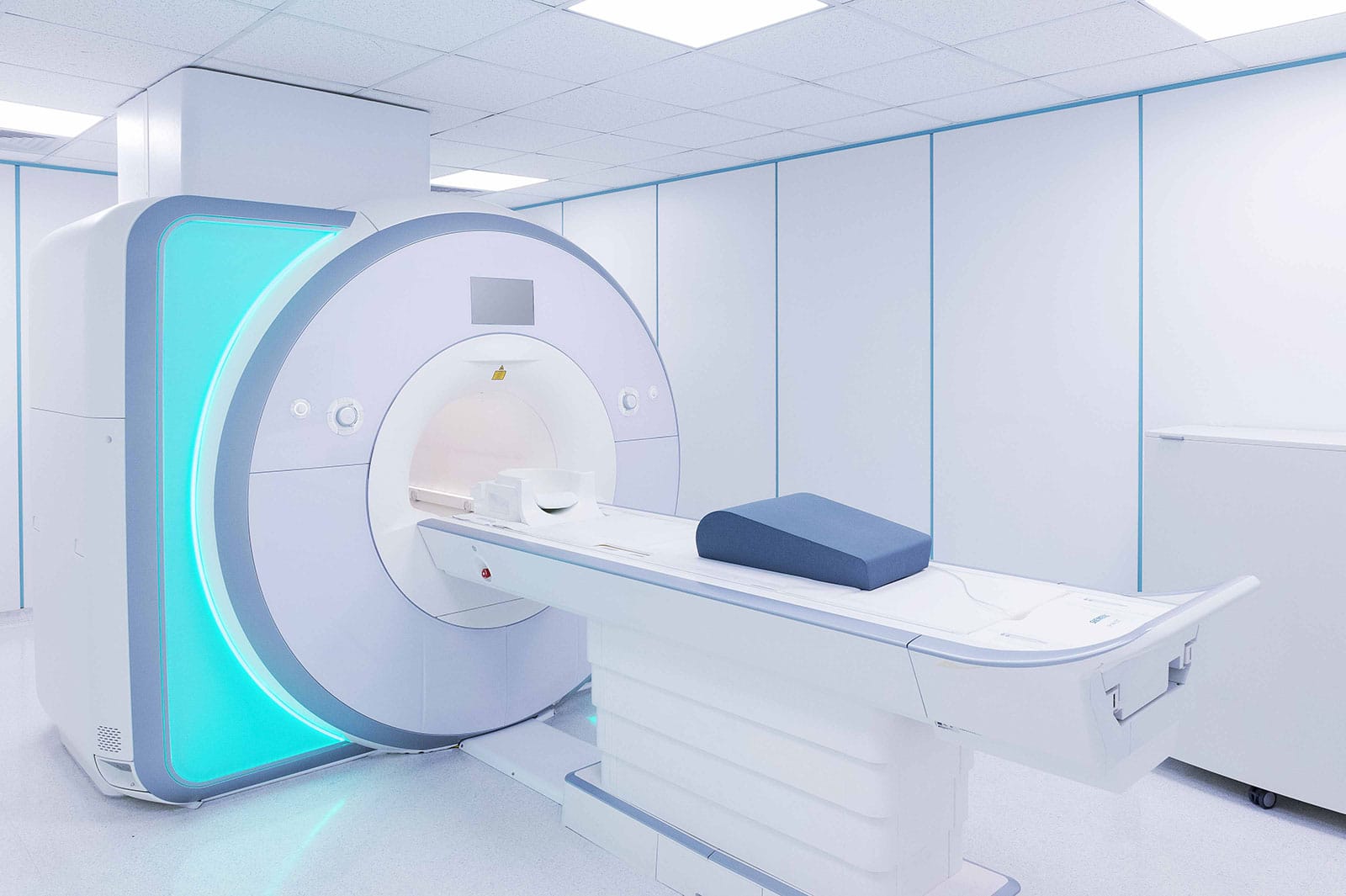
Research has revealed that an MRI scan is the gold standard diagnostic tool for diagnosing sinus tarsi syndrome (Lee et al., 2008. Helgeson et al., 2009). However, an MRI scan is an expensive, time-consuming procedure often taking between 30-60 minutes to complete and involves you lying very still within a metal cylinder (see above image). The MRI produces a series of images of your ankle, from front to back. These slices provide a highly detailed 3D image allowing for an accurate diagnosis to be made.
Diagnostic musculoskeletal ultrasound imaging
Diagnostic musculoskeletal ultrasound imaging is a highly appropriate and effective imaging tool to assess sinus tarsi syndrome (Shields et al., 2003). Ultrasound imaging is able to confirm the diagnose of sinus tarsi and is excellent at assessing how much inflammation (known as ‘synovitis’) is present. It can also assess if there is any associated ligament injuries, ganglions (a fluid filled swelling from the sinus tarsi or surrounding a joint) and/or capsular swelling. Ultrasound is also capable of assessing the ankle and foot dynamically if your symptoms are associated with movement, such as soft issue impingement.
At Complete our team of clinicians are qualified as both physiotherapists and musculoskeletal sonographers. During your initial assessment your clinician will conduct a thorough assessment including a diagnostic scan. There is no extra charge for an ultrasound san. If you would like more information or would like to book an appointment please contact us on 0207 4823875 or email injections@complete-physio.co.uk.
How do we treat sinus tarsi syndrome?
Sinus tarsi syndrome is routinely treated conservatively, with a course of physiotherapy.
Physiotherapy intervention for the rehabilitation of sinus tarsi syndrome may include:
- Advice on activity modification i.e. reduces the activities that aggravate your pain
- Balance and stability exercises to increase proprioception of the ankle.
- Calf and intrinsic foot muscle strengthening exercises
- Sports taping to reduce pain and improve the stability of the ankle
- Provision of orthoses (arch support) to support rear foot positioning. In some cases; an onward referral to a podiatrist may be required for bespoke orthotics (Dugarte et al., 2016), (see image below)
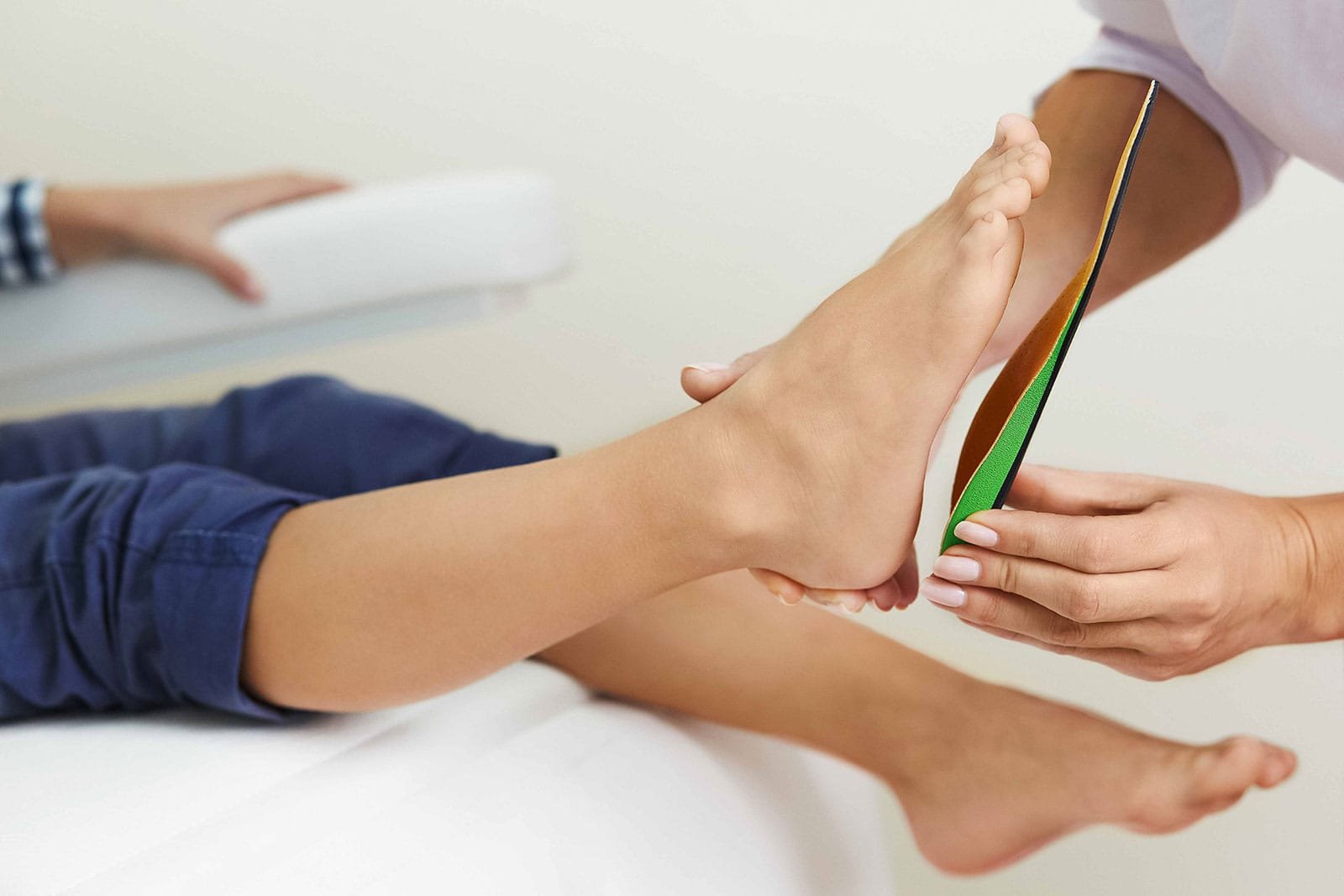
Here are a few tips and tricks you may wish to try yourself:
- Avoid aggravating activities such as running on uneven surfaces or jumping
- Using an ankle support may help stabilise the rear foot, reducing your symptoms
- Calf strengthening exercises such as heel raises can help strengthen your ankle muscles and stabilise your ankle (see image below)
- Practice standing on one leg – balance training is one element of ankle stability
- Over-the-counter oral medication such as paracetamol or ibuprofen or a topical anti-inflammatory gel such as Voltarol can be effective at reducing pain associated with osteoarthritis (talk to your pharmacist before taking medication)

What if conservative management does not work?
In cases of persistent sinus tarsi pain, where synovitis is the predominant cause of symptoms, an Ultrasound-guided corticosteroid injection can be a very effective treatment modality.
Corticosteroid or steroid injections (a potent, injectable anti-inflammatory medication) has been used effectively for decades within musculoskeletal medicine to reduce pain and inflammation. The corticosteroid injection provides a period of pain relief allowing for a ‘window of opportunity’ for you to rehabilitate your ankle effectively. Corticosteroid injections should not be used as a standalone treatment. We believe a combination of a corticosteroid injection and physiotherapy results in significantly better outcomes.
Complete clinicians are highly experienced in assessing and treating sinus tarsi syndrome. Our highly skilled team of professionals are fully qualified independent prescribers, physiotherapists, musculoskeletal sonographers and injection therapists. During your first visit your clinician will be able to assess and diagnose your issue and in the same session carry out an ultrasound-guided injection if appropriate. You do not need a GP to refer you. You can simply self-refer directly into the clinic.
If you would like more information or would like to book an appointment please contact us on 0207 4823875 or email injections@complete-physio.co.uk.
Surgical intervention
In the rare event that both conservative management and injection therapy fail to relieve your symptoms, an onward referral to foot and ankle orthopaedic consultant may be required. Keyhole surgery, known as arthroscopy, is used to remove chronically thickened synovium (synovectomy) or fibrotic tissue (arthrofibrosis) found within the sinus tarsi (Helgeston et al., 2009).


Leave A Comment